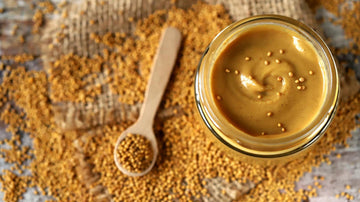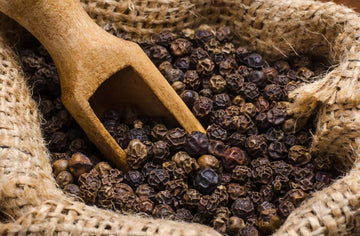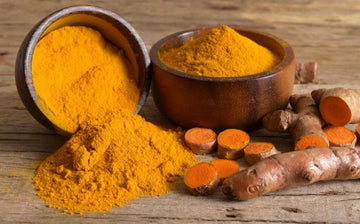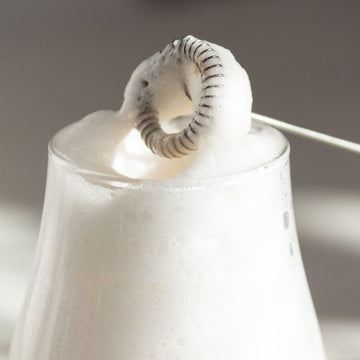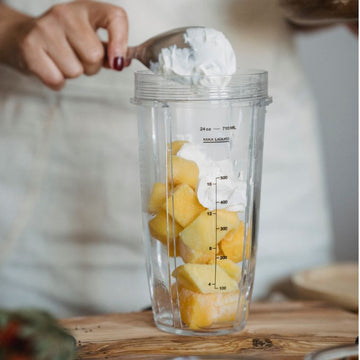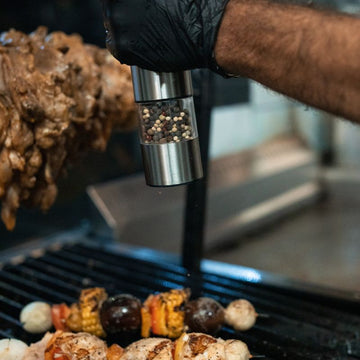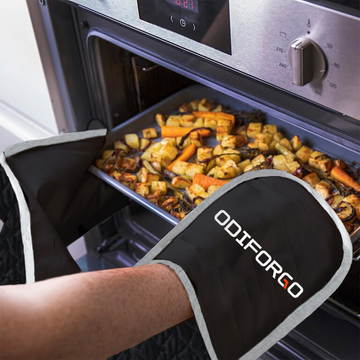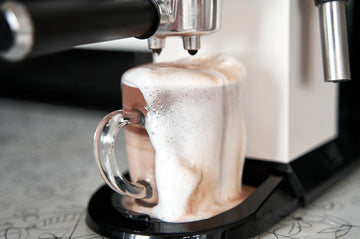Dijon mustard is bold, smooth, and a little bit sharp. It brings clean heat and a silky texture to dressings, sauces, and sandwiches. Born in Burgundy, this classic condiment has moved from French kitchens to pantries around the world.
In this guide, you’ll learn what makes dijon mustard different, how it tastes, and the best ways to use it day to day. We’ll compare dijon to other mustards, share simple cooking tips, and offer smart swaps when your jar runs out. You’ll also find storage advice, quick nutrition notes, and buying pointers, so you can choose a jar with confidence.
What is dijon mustard
Dijon mustard is a smooth, sharp, French-style mustard made from finely ground brown or black mustard seeds. It’s known for clean heat, gentle tang, and a pale, creamy color. Unlike yellow mustard, it skips turmeric and added sweetness, so the taste stays crisp and focused. The name “Dijon” refers to a style first perfected in Burgundy. Today, you’ll find dijon mustard made all over the world, but the flavor benchmarks remain the same.
Flavor profile
Dijon mustard tastes bright, peppery, and slightly acidic. The heat builds, then fades fast, leaving a clean finish. You may catch subtle wine notes and a hint of earth from the seeds. The texture is silky and spreadable, which helps it blend into dressings and sauces without grit. Compared to yellow mustard, dijon is less sweet and more assertive. Compared to whole-grain mustard, it’s smoother and more refined.
Ingredients
Classic dijon mustard uses brown or black mustard seeds, verjuice or white wine, water, and salt. Many modern jars use vinegar instead of verjuice, plus small amounts of acid regulators like citric acid. You won’t see turmeric, and sugar is usually minimal to none. Some brands include sulfites from wine-based ingredients. If you prefer a cleaner label, look for jars that list only seeds, wine or vinegar, water, and salt.
History
Dijon’s mustard tradition dates back centuries, with a notable leap in 1856 when Jean Naigeon reportedly swapped vinegar for verjuice. That switch gave dijon its signature gentle tang and smooth, elegant bite. As Burgundy’s winemaking and food culture grew, so did the condiment’s fame. Over time, “Dijon” became a global style rather than a protected name, while “moutarde de Bourgogne” ties mustard more directly to the region. Today, dijon mustard remains a pantry staple for cooks who want clean flavor and reliable performance.
Dijon mustard vs. other mustards

Dijon mustard stands apart for its clean heat, silky texture, and gentle tang from wine or verjuice. It tastes sharp but not harsh, and it blends fast into dressings and sauces. If you want a mustard that disappears into a vinaigrette while lifting the flavor, dijon is the classic pick.
Yellow mustard is milder and a bit brighter, with turmeric lending color and a softer bite. It’s the default for hot dogs and picnic salads. When a recipe needs mustard without much heat, yellow shines. Dijon, by contrast, gives more backbone and a more refined finish, which is why chefs reach for it in pan sauces and marinades.
Whole-grain mustard keeps many seeds intact, so it’s nubbly and rustic. The flavor can be similar to dijon, but the texture makes it a different tool. It’s great for charcuterie, potato salads, or as a crust on roasts. If you want the look and pop of seeds, choose whole-grain. If you want silk and seamless emulsions, choose dijon.
Spicy brown mustard is coarser and punchier, with a darker, more robust taste. It carries more seed hull, which adds a toasty, earthy note. It’s a strong match for deli meats and sausages. Dijon is smoother and more wine-forward, so it fits better with delicate proteins, pan sauces, and creamy dressings.
English mustard is hot and direct. It hits fast and hard, then clears. Think of it as a sharper tool for assertive dishes, roast beef, and ploughman’s lunches. German mustards range from sweet Bavarian styles to hot Düsseldorf versions. The sweet types use more sugar or apples, making them ideal for sausages and pretzels. Dijon sits in the middle: not sweet, not sugary, but lively and balanced.
Honey mustard is a different lane altogether. It is sweet, mild, and kid-friendly, made by blending mustard with honey. Use it for glazes and dipping sauces when you want caramelization and a gentle tang. When you need structure and acidity to build a sauce or dressing, dijon delivers more control.
In short, pick dijon for smooth texture, clean heat, and elegant acidity. Pick yellow for mildness, whole-grain for crunch, spicy brown for heft, English for punch, German for regional character, and honey mustard for sweetness.
How to use dijon mustard in everyday cooking
Dijon mustard is a natural emulsifier, which means it helps oil and acid come together. Whisk a small spoonful into a vinaigrette to make it smooth and stable. A simple ratio is one teaspoon dijon, three tablespoons vinegar or lemon juice, and half a cup of olive oil. Add salt and pepper, then adjust to taste. The mustard keeps the dressing silky and adds clean backbone without sweetness.

For quick pan sauces, deglaze the skillet with wine, stock, or water after searing meat or mushrooms. Reduce a bit, then whisk in a teaspoon or two of dijon off the heat. Swirl in a pat of butter to finish. Avoid boiling the mustard hard, or the flavor may dull. The result is glossy, balanced, and ready for chicken, pork, fish, or roasted vegetables.
Dijon shines in marinades and glazes. Blend it with garlic, herbs, and a touch of honey for chicken thighs, pork tenderloin, or salmon. It helps season cling to the protein and promotes light browning. As a starting point, use two tablespoons dijon, one tablespoon honey, two tablespoons olive oil, and a splash of lemon. Marinate for 30 minutes for fish, one to two hours for poultry, and up to four hours for pork.
On sandwiches and burgers, mix dijon with mayo for a quick aioli. It cuts richness and brightens each bite. Stir a spoon into potato salad or coleslaw dressing for lift without extra sugar. Deviled eggs get a classic edge from a small amount of dijon, plus a pinch of paprika and chives.
Creamy dishes benefit from a little mustard, too. Whisk a teaspoon into mac and cheese sauce to sharpen the cheese. Fold it into sour cream or yogurt for a fast dip with dill and lemon. Make compound butter with dijon, parsley, and shallot, then melt it over steak or roasted carrots.
Dijon makes a great crust. Spread a thin layer on lamb or chicken, press on breadcrumbs and herbs, and roast until crisp. It also helps breadcrumb coatings stick to fish without sliding off. Keep the layer thin so the heat can reach the surface and the crust stays light.
Pair dijon mustard with tarragon, thyme, dill, and chives. It loves capers, shallots, and white wine. Start small, taste, and add a bit more as you go. A little dijon carries far, and the goal is balance, not burn.
A great addition to your daily cooking
Dijon mustard earns its spot in the pantry by doing a lot with a little. It brings clean heat, gentle acidity, and a silky texture that pulls sauces and dressings together without stealing the show. Whether you’re whisking a vinaigrette, finishing a pan sauce, or giving sandwiches a smarter spread, dijon mustard adds lift and balance in seconds. Keep a jar on hand, start with small amounts, and let its crisp, wine-kissed character brighten everyday cooking.
FAQs
Is dijon mustard spicy?
Dijon mustard has a moderate, clean heat that builds and fades quickly. It’s hotter and more assertive than yellow mustard but smoother and less aggressive than English mustard. The warmth comes from brown or black mustard seeds and the gentle tang from wine or verjuice, which keeps the finish crisp rather than harsh.
Can I substitute other mustards for dijon?
Yes, with a few tweaks. Yellow mustard works when you want a milder result; add a splash of white wine vinegar or lemon juice to mimic dijon’s acidity. Whole-grain mustard brings similar flavor with a nubbly texture—great in rustic salads or as a crust on meats. Spicy brown delivers more punch and earthiness; use slightly less to avoid overpowering the dish. Honey mustard adds sweetness, so reduce any sugar in the recipe and add a bit of acid to stay balanced. If a recipe relies on dijon to emulsify a dressing, whisk longer and consider a small extra dab of mustard to keep it stable.
How should I store dijon mustard, and how long does it last?
Unopened jars can sit in a cool, dark pantry. Once opened, refrigerate dijon mustard with the lid on tight. For best flavor, use within 9 to 12 months, though it often stays safe longer. Always use a clean spoon to avoid contamination, and discard the jar if you notice off smells, discoloration, or any signs of mold.
